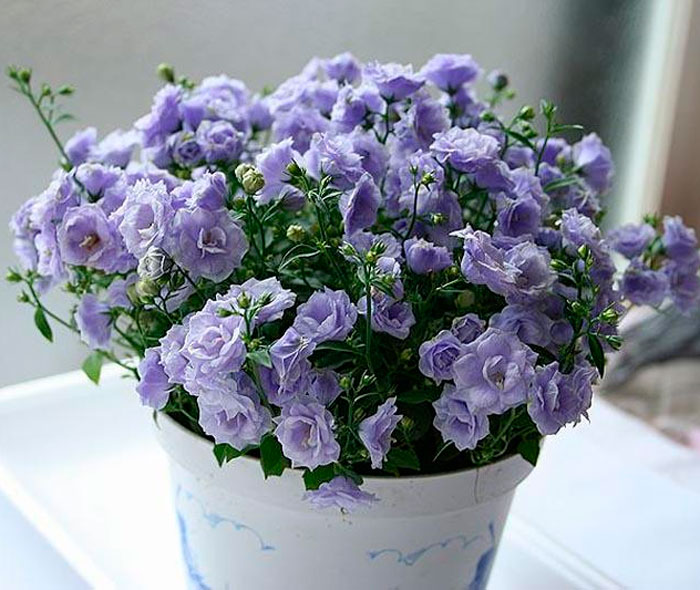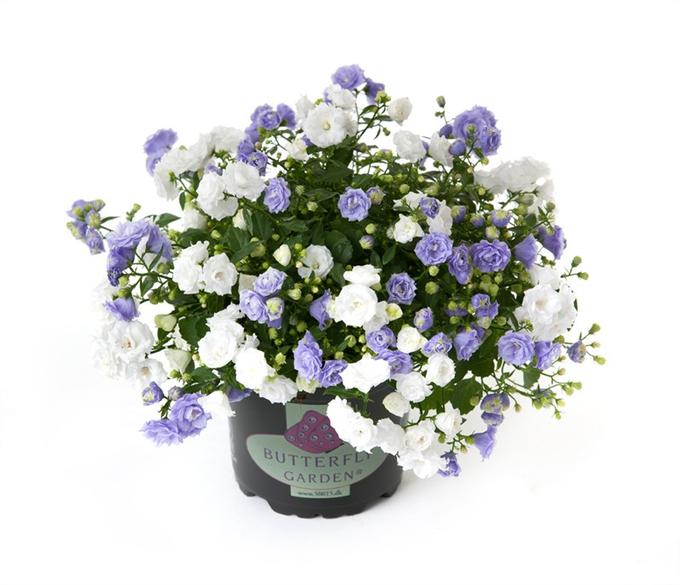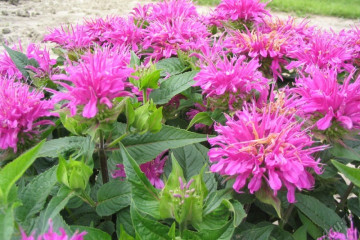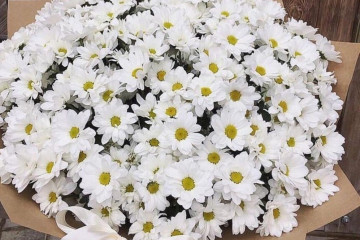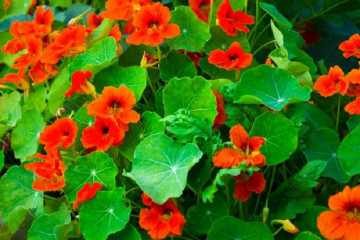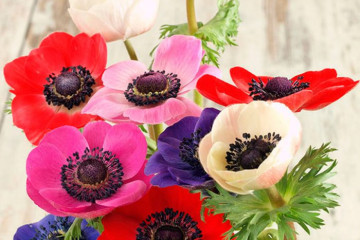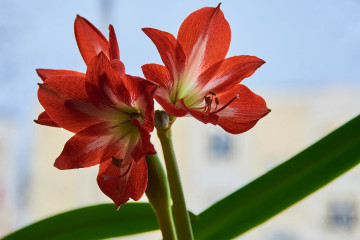Terry campanula - outdoor care
Content:
Among the known types of campanula, the most popular is the terry variety. Small flowers that look like roses are eye-catching and admirable. Taking care of this beauty will not bring a lot of trouble.
Origin and types
Campanula is a southern plant. Its habitat is the coast of the Mediterranean Sea, the Caucasus and the territories of Asia adjacent to the Mediterranean Sea. Scientists count at least 400 species of this delicate flower.
If ordinary species form a simple flower, then terry campanula affects many wavy petals. This type of plant does not occur in nature. The world owes the appearance of the terry bell to the work of breeders and geneticists. To create a new species, scientists crossed the Carpathian Campanula and the spoon-leaved one.
During the breeding work, several varieties of terry campanula were bred. Like other varieties, Campanula Maya with blue flowers is called "groom", with white flowers - "bride". The most famous among the population are the following types:
- Blue Bali. Forms stems 10 cm in length. A flower bud is laid at the top of each shoot. Terry flowers, no more than 2 cm in diameter. The color scheme is blue with a lilac tint. With good care, it blooms profusely. Leaves with jagged edges, round in shape. They are located on long cuttings. During flowering, they close with buds.
- White Bali. It is a kind of Bali species, but with white flowers.
- Campanula mini terry. A short plant, about 10-15 cm in height. The stems are densely covered with small leaves with a carved edge. Terry flowers. Campanula the terry bride blooms with white flowers, the groom's bell - light blue. Flowers with a lilac shade are rare.
In the gardens, in addition to low-growing campanula varieties, species up to a meter in height are grown. These high types of campanula include:
- Milky bell. It grows up to 110 cm, forms pyramidal inflorescences, consisting of hundreds of flowers.
- Nettle leaf. Forms stems up to 80 cm high. Flowers are collected in a brush.
- Peach-leaved. Reaches 90 cm in height. Flowers form a sparse raceme.
- Broadleaf. Is a record holder. It grows up to 150 cm. The flowers of this species are the largest - 6 cm in length.
Outdoor care rules
Caring for terry campanula outdoors is not much different from caring for simple varieties of this genus. However, it is worth paying more attention to it. Any violation will lead to the termination of flowering. Describing the basic growing conditions will help reduce the risk of flower loss.
Location and lighting
Terry beauty loves rare sunlight. Therefore, it grows better in an open area with little shading.
Soil and fertilizers
To grow terry campanula, you need to take loose soil. It is best to use the following composition for her:
- 6 pieces of turf;
- 3 pieces of leafy land;
- 1 part peat;
- 1 part sand.
Drainage is placed in the flowerbed as the first layer. This is necessary to drain excess water and prevent root rot. The prepared soil is the second layer. If it is not possible to make soil from the above composition, then sand and humus can be added to the soil of the site. This will lighten the ground and the roots of the plant will be able to breathe.
If the land of the site passes water well and does not swamp, then when planting a bell, you can do without drainage.
Watering and humidity
When growing campanula, both excess and lack of moisture should be avoided. In spring and autumn, it is enough to water the plant 2 times a week; in hot weather, you will have to do this every day.
To determine the need for watering, you need to inspect the root hole. If the topsoil is dry, then watering is required.
It is better to water the plant in the evening. At the same time, make sure that water does not fall on the buds. Watering in the evening will help prevent sunburn on the leaves. The flower is not picky about moisture.
Diseases and methods of dealing with them
The main diseases of campanula are associated with improper watering. With an excess of moisture on the plants, the following diseases appear:
- Powdery mildew;
- Gray rot;
- Nematodes;
- Fungal diseases.
To treat the affected bells, first of all, you need to let the earth dry out and water the plants only after the top layer of the earth has dried. It is possible to destroy causative agents of diseases with foundation or copper-containing preparations.
Problems when growing campanula
During the cultivation of a flower, problems may arise not only with the lack of flowering or the appearance of diseases. The leaves of the plant may begin to wither. Gradually, they begin to fall off. This behavior of the plant indicates excessive watering or excessive lighting.
Growing by cuttings
A quick way to propagate Campanula is to grow it from cuttings. For such reproduction, stems without damage are chosen in April. They are cut and cut into cuttings with 3-4 buds. Prepared twigs are planted in a mixture of earth and sand. The plantings are well watered and covered with foil or glass.
Rooting of the twigs takes place within 4 weeks. The greenhouse is removed and after the new plants grow, they are transplanted to the flower bed. For better rooting of seedlings in a flower bed, they need to be covered from the sun for several days.
If you plant cuttings with different shades of petals in one flowerpot or flower bed, you can get a two-color plant. However, a partition must be placed between them in the ground. The plant with white flowers is stronger and gradually drowns out the neighbor.
How to make campanula bloom
Often, gardeners are faced with the lack of flowering of campanula. In order for the plant to please with beautiful flowers every year, in the spring, after a dormant period, you need to pinch the tops of the formed branches.
In the summer, to maintain active flowering, you need to remove faded buds.
The main condition for the formation of flower buds is the presence of a dormant period. It is characterized by a lack of feeding, moisture and a drop in temperature. By creating such conditions artificially for a short time, you can stimulate the plant to bloom. This method is more suitable for awakening home bell flowers.
Campanula after flowering during dormancy
The campanula bell stops flowering in September. To prepare it for winter, the stems should be shortened, leaving shoots no more than 10 cm. When grown in central Russia and to the north, the flower must be sheltered from frost for the winter. Leaves, straw, or covering material can be used.
Compliance with simple rules when growing campanula on the site will help to significantly decorate it. Having planted it near perennial flowers, you can admire the beautiful flowers for 8 years.
Video
